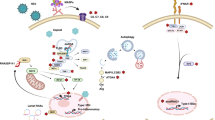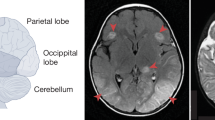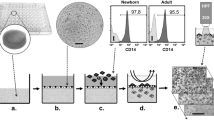Abstract
ABSTRACT. We have studied the peripheral blood leukocytes from human infants in an assay involving the protection of neonatal mice from herpes simplex virus (HSV) infection by human antibody, interferon, and leukocytes. Recombinant DNA α-interferon (IFLrA), antibody, and Ficoll-Hypaque-purified mononuclear cells (MC) from human adults administered intraperitoneally protected neonatal mice from a lethal HSV challenge 1 day later (73.6% survival). MC obtained from human infants less than 130 days old in combination with IFLrA and antibody afforded no protection (15.2% survival; p < 0.0005 compared to survival with adults' MC). MC from infants over 130 days protected the neonatal mice (60% survival; not significantly different from survival using adult cells, but significantly (p < 0.0005) different than survival using MC from younger infants). The ontogeny of MC protection parallels the clinical development of resistance of infants to HSV infection.
Similar content being viewed by others
Log in or create a free account to read this content
Gain free access to this article, as well as selected content from this journal and more on nature.com
or
Author information
Authors and Affiliations
Rights and permissions
About this article
Cite this article
Kohl, S., Bigelow, R. & Loo, L. Ontogeny of Protection of Neonatal Mice from Lethal Herpes Simplex Virus Infection by Human Leukocytes, Antiviral Antibody, and Recombinant α-Interferon. Pediatr Res 18, 1164–1167 (1984). https://doi.org/10.1203/00006450-198411000-00022
Received:
Accepted:
Issue date:
DOI: https://doi.org/10.1203/00006450-198411000-00022



